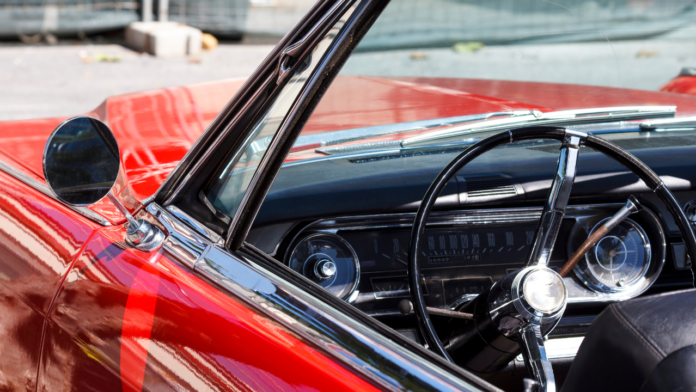The restoration of a classic car is an art form that brings back the vehicle’s original glory and charm. The interior of a vintage car holds memories of a bygone era and reflects the craftsmanship of the time. However, restoring the interior of a classic car requires a delicate balance between preservation and renovation. This comprehensive guide will walk you through the best practices for vintage car interior restoration, ensuring that the essence of the automobile is maintained while breathing new life into its cabin. For expert assistance in this meticulous process, turning to specialists like Chimera Motors can provide the precision and care needed to honor the legacy of your classic car.
Assessing the Interior: The Starting Line
Restoring a classic car’s interior begins with a thorough assessment. This critical first step involves examining the condition of each component to decide what can be salvaged, what needs to be repaired, and what must be replaced.
Evaluating the Condition of the Interior
Careful inspection of the upholstery, dashboard, carpets, and trim is essential to determine the extent of wear and damage. Pay particular attention to areas that are prone to wear, such as seats, floor mats, and the steering wheel.
Identifying Original Materials and Features
Understanding the original materials used in the car’s interior and the unique features of the model will guide the restoration process. The aim is to maintain authenticity by using materials and designs that match the era of the vehicle.
Setting a Restoration Plan
Once the assessment is complete, a detailed restoration plan should be drawn up. This plan will act as a roadmap, outlining each step required to restore the interior to its former glory.
Preserving Authenticity: Respecting the Past
The charm of a classic car lies in its authenticity. When restoring the interior, it’s crucial to use materials and techniques that align with the car’s era, ensuring that the restoration work is in harmony with the vehicle’s original character.
Sourcing Authentic Materials
Finding the right materials is perhaps the most challenging aspect of interior restoration. For upholstery, headliners, carpets, and other fabrics, seek out suppliers that specialize in vintage car materials.
Employing Period-Correct Techniques
Using the correct techniques is just as important as using the right materials. For example, the stitching on the seats should match the original pattern and style used when the car was first manufactured.
The Finer Details: Dashboard and Trimmings
The dashboard and trimmings are the jewelry of the car’s interior. Restoring these elements often requires a combination of cleaning, repairing, and sometimes fabricating parts to replace those that are beyond repair.
Restoring the Dashboard
The dashboard is often faced with wood or metal and might have intricate details that need careful attention. It may require refinishing or re-veneering to bring back the luster without losing the patina that adds to its character.
Refurbishing Door Panels and Trimmings
Door panels and trimmings can suffer from scratches, dents, and fading. Where possible, restore these elements by filling, sanding, and repainting or staining to match the original finish.
Upholstery and Carpet Restoration: Comfort and Style
The seats and carpets of a classic car are where comfort meets style. Restoring these correctly can make a significant difference in both the appearance and the value of the car.
Reupholstering Seats with Precision
Seats must be comfortable, functional, and aesthetically pleasing. When reupholstering, it’s essential to maintain the shape and support of the original seats using similar springs, padding, and fabrics.
Replacing or Cleaning Carpets
Carpets must be dealt with on a case-by-case basis. Sometimes deep cleaning and repair can bring them back to life, but often they need to be replaced. If replacement is necessary, ensure the new carpets are cut to the exact original specifications and made of similar materials.
The Devil in the Details: Finishing Touches
The finishing touches can make all the difference in a restoration project. It’s the small details that often go unnoticed but together create a sense of completeness and care.
Selecting the Right Hardware and Accessories
Even small hardware pieces like knobs, handles, and switches play a significant role in the overall look and feel of the car’s interior. These should be cleaned, restored, or replaced with period-correct pieces.
Attention to Stitching and Seam Work
Stitching and seams should be executed with precision. The color of the thread, the spacing of the stitches, and the patterns used contribute significantly to the authenticity of the restoration.
Restoring a classic car interior is a journey back in time. It’s a meticulous process that requires patience, attention to detail, and a deep appreciation for the automobile’s history. By following these best practices for vintage car interior restoration, you can ensure that every button, stitch, and panel reflects the era’s spirit and craftsmanship. A well-restored classic car is more than just a mode of transportation; it’s a moving, functional tribute to automotive heritage.


